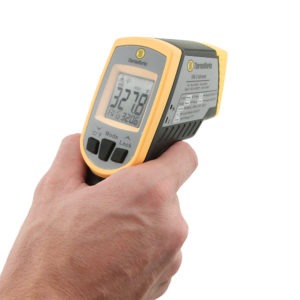When installed on top of a concrete slab without insulation it is generally accepted that a radiant floor heating system will take the chill away from the floor and provide a small amount of warmth.
Thermometer in concrete in radiant floor heat.
There s two basic types of concrete floor heating hydronic and electric.
Adding insulation on top of the slab and beneath any floor heating system will allow a greater percentage of the heat generated to transfer to the.
Due to it s density and low conductivity concrete retains heat very well.
With a floor sensor controlling the radiant zone independent of the room s air temperature the floor maintains whatever baseline temperature you desire and the other heat sources if used can make up the difference.
Only on very cold days when the radiant heating system is called on for maximum output will the floor actually feel warm.
So when installing a floor sensor thermistor never embed the thermistor itself into the concrete.
The most cost effective system for medium to larger homes is hydronic since the amount of power it would take to heat a whole home with electric would be substantial.
This means that you will feel more comfortable at a lower ambient temperature level because you won t experience cold drafts.
In contrast radiant floor heating systems heat the entire floor which leads to an evenly heated room and for an even ambient temperature around a person s body.










